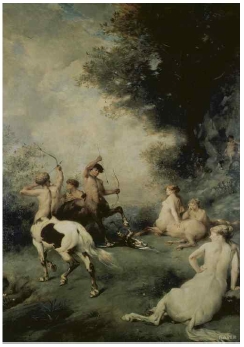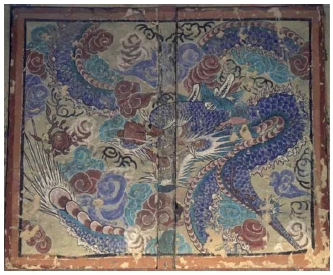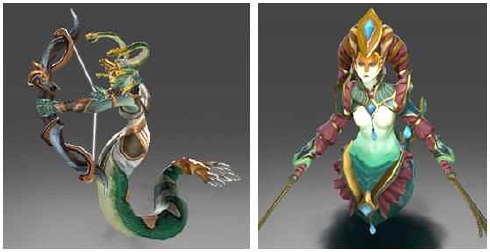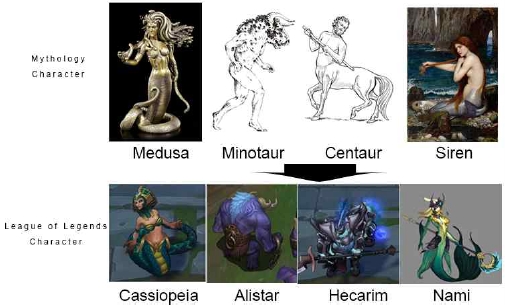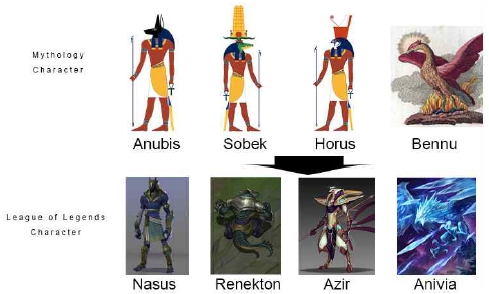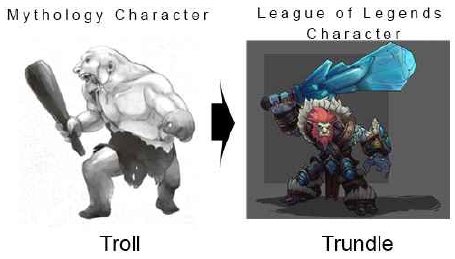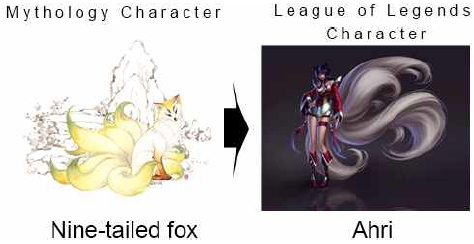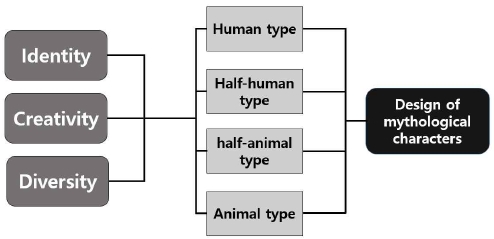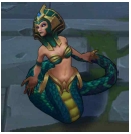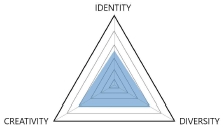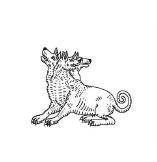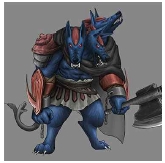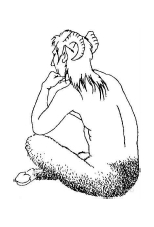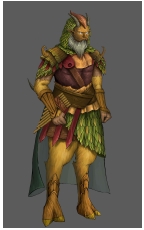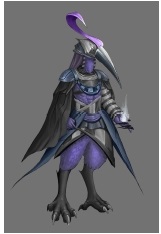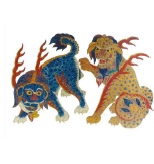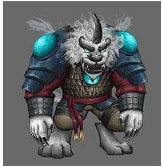
A Study on Game Character Design Based on Mythical Motif : Focused on League of Legends
Copyright ⓒ 2019 The Digital Contents Society
This is an Open Access article distributed under the terms of the Creative Commons Attribution Non-CommercialLicense(http://creativecommons.org/licenses/by-nc/3.0/) which permits unrestricted non-commercial use, distribution, and reproduction in any medium, provided the original work is properly cited.

Abstract
The game industry has settled a culture as the number of users around the world increases every year. Most game characters are represented in the game as different appearances and stories. There are characters generated from past stories such as myths, legends, and folk tales. These mythical characters appear in various shapes and contents. Especially, in the case of Multiplayer Online Battle Arena(MOBA) genre, the ability and appearance of characters are most important, because users play different characters in the same space. Therefore, the unique background story of mythical characters in games can be an interesting resource when designing characters in MOBA and is already widely used. Among MOBA genres, the League of Legends(LOL) is a popular game with a lot of popularity and users. In this study, we categorize identity, creativity, and diversity in character component, and human, half-human, half-animal, and animal as composition type in the LOL. Also, we compared characters’ component and composition type of the LOL based on myth. Based on this analysis, we designed four characters. Based on the results of this study, we hope that it will be helpful in the future production of game characters in the MOBA genre.
초록
게임 산업은 매년 전 세계 사용자가 증가함에 따라 게임이 대중문화로 정착 될 수 있었다. 대부분의 게임 캐릭터는 서로 다른 모양과 이야기로서 게임에 표현된다. 여기에는 신화, 전설 및 민속 이야기와 같은 과거 이야기에서 생성 된 캐릭터들이 많이 등장한다. 또한 이러한 신화적인 캐릭터는 다양한 모습과 내용으로 게임에 나타난다. 특히 MOBA (Multiplayer Online Battle Arena) 장르의 경우 사용자가 동일한 공간에서 다른 캐릭터를 플레이하기 때문에 캐릭터의 능력과 모양이 가장 중요하다. 따라서 게임에서 신화 캐릭터가 지닌 독특한 배경 이야기는 MOBA에서 캐릭터를 디자인할 때 흥미로운 자료가 될 수 있으며 이미 널리 사용되고 있다. 본 연구에서는 리그 오브 레전드에서 캐릭터 구성 요소, 인간, 반 인간, 반 동물 및 동물의 정체성, 창의성 및 다양성을 기반으로 분류하고 신화를 바탕으로 리그 오브 레전드(League of Legends)의 캐릭터 구성 요소와 구성 유형을 비교했다. 이러한 분석 결과를 바탕으로 네 개의 캐릭터를 제작하였다. 본 연구의 결과를 바탕으로 향후 MOBA 장르의 게임 캐릭터 제작에 있어서 도움이 될 것을 기대한다.
Keywords:
Character Design, Myth, League of Legends, Multiplayer Online Battle Arena, Mythology-motif키워드:
캐릭터 디자인, 신화, 리그 오브 레전드, 멀티플레이어 온라인 배틀 아레나, 신화 모티브Ⅰ. Introduction
As the number of users and total revenue of games increased, the gaming industry has grown into an important part of the world's industrial economy. In the process, gaming has become a large cultural part of our country. The gaming industry's importance to the cultural industry has continued to increase. From the old video game of PONG, today's games have improved drastically both in quality and diversity. Diverse games are coming out annually, and the characters inside these games are also incredibly diverse. While there are many facets of these characters, the visual design is not only the first thing that the gamers take into consideration, but it also acts as a visual stimulus. Therefore, the design of the game character is an important factor that decides the user's emotional attachment and preference[1]. Thus, it's safe to say that the design of the game character is a crucial element of the game. Also, game developers are showing diverse types of characters inside their games to pique the interest of the users. Among these characters, there are many who have motif or reference from original characters of mythologies and legends.
A mythology is a story that is orally passed on through time. Mythologies have a plot inside a narrative structure. Stories that talk about the deeds of these mythological characters in a plot are called mythologies[2]. These stories are a great source of content for people. It's been reported that if the characters have a narrative from a legend or folk tale, the rate of commercial success increases[3]. That's the reason why many characters inside mythologies and legends have already become friendly characters inside many contents. The gaming industry especially uses characters from diverse mythologies, legends and folk tales[4]. Because each country has their own mythology, legend and folk tale, these stories have become an inseparable part of the fantasy genre.
Mythological characters are now inseparable from the element of fantasy. Also, because they show abilities that humans don't have, they can be produced to have diverse abilities during character production. Also, these characters normally have a story and a background[5]. Therefore, many characters in original mythologies are now being recreated after they are re-interpreted to fit the storytelling inside the games. Instead of directly bringing a character from a mythology, industries in the digital content such as games, animation and others are using entire mythologies as a motif to create unique characters. One could say that a motif is an efficient method to make the product unique and interesting[6]. Characters with diverse motif not only have a similar external appearance, but their abilities are also born as a motif from original characters. For example, a character created from a motif from the Medusa in the Greek Mythologies usually have the ability to make people into stone. Like this, mythologies have a large influence in both the external shape and ability of game characters, especially games in the MOBA (Multiplayer Online Battle Arena) genre. Because users can play many characters in these games, the external design and abilities of the characters are very important.
1.1 background and purpose
Among the online games, the genre that has the highest number of users is Role Playing Game(RPG)[7]. And among the many types of RPG Games, the Massive Multiplayer Online Role Playing Game(MMORPG) provides, unlike other games, the users a function called "customizing," where users can change the external shape of the characters based on their preference to a certain degree. MMORPG Games allow the users to directly customize their characters, which can increase the users' preference level. But it also poses the threat of destabilizing the unique characteristic of the character due to diverse external changes and lowering the general public recognition of the character[8]. Meanwhile, the public recognition level of the character is extremely important in MOBA Games. Because the map is limited and the only thing that changes are the characters, the recognition level of the characters plays an important role inside the game. In reality, users can enjoy an easier game-playing if they are actually aware of the character. Therefore, if a cognitive design is inputted on these characters appropriately, it is a lot easier to quickly recognize these characters. Going forward, it allows users to have an easier understanding of the game, leading to a larger inflow of users compared to other games. Also, because of the characteristic of the MOBA genre, the style of the gameplay changes based on the game characters. This makes the characteristic of each character distinct and unique. LOL was launched in 2009 by the Riot Games, and started service in Korea in 2011, LOL is a MOBA Genre Game that has increasingly shown a high user rate[9]. In LOL, users can play many game characters and select the character that best suits them. Also, because each character has a different role and special abilities, they can enjoy many types of playing experiences even in the same map. This shows how, compared to other type of game genre, the MOBA genre values the diversity of inherent skills for each character and the distinct external appearance of each character.
This paper aims to analyze characters of LOL by doing an extensive research on the mythological-based characters in LOL. In the process, we'll be focusing on the characteristics of each character and also explain their external design. The analysis will include a reference of each character's external shape and abilities from the official homepage of LOL to provide an original and accurate concept design of mythology-motif MOBA game characters.
1-2 Design Approaches
Characters are distinct subjects that each have an unique characteristic and expression. They are individualized beings that were created to stimulate the human emotion and make people feel a level of intimacy with them[10]. Characters are main subjects that have a personality and character. Thus, each character requires an "identity." Because most users tend to choose the game based on the character, rather than taking into consideration the in-game character demand[11], the identity of the character becomes an important evaluation standard of the game. Thus, the image of the game characters in the game plays a decisive role in which game, and ultimately, character, the user plays. Thus, many game developers are putting a lot of effort in the design stages of the game character to create a good first impression. Also, game characters have an important role of allowing the users to communicate mutually within the game[12]. Also, while it's possible to think that players would access the characters for the first time during the game, the reality is that users are given access to these characters during advertisements or the official home page illustration. When taking this into consideration, the design of the game characters play a very important role in the selection of game characters for the users.
The selection critique and method of the game characters for this research are as follows. First, we'll create a list of characters that have mythology-motif in LOL. Second, we’ll select the mythological character through the survey about the presence of myth motif for characters. Also, we also analysis the current mythological character status in LOL. Third, we categorize identity, creativity, and diversity in character component, and human, half-human, half-animal, and animal as composition type in the LOL. Forth, we’ll design the character based on the mythical motif.
Ⅱ. Related Works
2-1 Mythology and Character
Mythologies are not only stories about the world's origin, but are also humanity's greatest philosophical stories. Mythologies are stories of worlds that transcend human values and judgment. As people repeatedly passed on these stories, mythologies have survived through a tautology mechanism. Thus, as mythologies have integrated themselves through the modern society, they have become not only an interesting story on the fascinating world of gods and the world's origin, but also an important part of historical and cultural identity[13].
The greek mythology has, after the hellenism era and the roman age, become an important part of cultural and artistic artworks. Not limited to greek mythology, each culture in the world has managed to create their own unique mythology[14]. Many of these mythologies are now the main sources for diverse contents that can be found easily in your daily life. As a result, there are many cultural characters that have a mythology-motif. Because the mythology of creation is very similar for each culture, cultures near each other have very similar mythologies and legends, However, because each culture is unique regarding their language and culture, no two mythologies are the same, as each possess their individual characteristic[15]. Mythologies were the origin of creativity from the ancient times, and is now a major part of many fantasies[16]. Han, Dong hoon (2009) has said that "the pastiche tendency we have for the characters inside the mythology stemmed from the fear of nature that people had, way before human intelligence started to evolve[17]." It is why, in these mythologies, one can find a tree talking or characters of half-man, half-animal as shown in Figure 1[18].
In mythologies, there are characters that have abilities and powers that the normal person could only imagine in their dreams. It wasn't simply gods that had this mythological ability- monsters inside diverse games also each had a distinct appearance and storyline. The reason for non-human characters having such distinct characteristics is because people used to believe that animals were divine beings, substitutes for God, targets for worshipping and cooperators. Thus, they were often targets for worshipping[19]. Because of this, animals inside mythologies frequently had abilities that weren't possessed by humans. Characters inside mythologies had appearances and abilities that surpassed humans. For example, they could be animals of shape that didn't exist in the world. They could also be normal animals, like a bird or a fish, that could fly in the air or swim in the sea. They could also frequently use magic. Also, animals that were born from imagination had enormous ability, allowing them to fly even though they didn't have wings as shown in figure 2[20].
2-2 Mythical Characters in MOBA Games
Characters in mythologies not only match the aesthetic values of the modern era, but they also represent idealized values. The mission of the game originates from the spirit of an adventure, where users can experience extreme events[21]. That is there reason why mythological characters often appear in games. Among the many type of game characters in MOBA games, mythology-motif characters are good characters to use because they are relatively well known by the general public.
Smite is one of the mythology-based game where players can select gods or characters from diverse mythologies in the game. There are many other MOBA games that use mythological characters as a motif. Mythological characters can both be directly brought into the games or incorporated after a slight modification. Game characters that have mythology motif in the game Dota 2 include Medusa, Zeus, Naga Siren, Phoenix and others[Figure 3].
Mythological creatures also appear not just as main characters, but also as secondary characters. A good example is the griffin that the hero "Falstad" rides in Heroes of the Storm from Blizzard entertainment(2015) as shown in Figure 4. The latin name of the griffin is Gryphios. A griffin is a creature shaped like an eagle but has 4 feet. It was hired by the new god of wine, Dionysus, in greek mythology to protect his cellar of wine[22]. Also, most of the mythological characters have distinct characteristics inside their gameplay. This not only has a positive influence on the users' impression of the character, but it also makes the individual characteristics of the character more distinct and unique.
2-3 Mythology Motif Characters in League of Legends
In greek mythology, most creatures that are half-man, half-animal are treated in a negative light as monsters. The reason for this is because, as mentioned previously, the greeks thought that humans were the best out of all creation[23]. Individuals of complex shape are most vividly expressed in the "stories of morphing" of Ovidius, but characters in these stories were considered less sacred compared to half-animal, half-human creatures in the asian mythologies[15]. Most creatures that appear in mythologies show an integrated form of organisms, such as gorgons, hydras and others. These monsters usually appear to give victory and glory to the heroes through their defeats[24]. Greek mythology was centered around mankind, and while some half-human, half-animal creatures appeared as good characters, most of them appeared as monsters who were killed by the heroes. The characters of the greek mythology, who appear in LOL, that this research would like to investigate are Medusa, Minotaur, Centaurs and Siren as shown in figure 4.
Egyptian mythology was born with a unique identity that has a deep connection with the egyptian culture[25]. Egyptian mythologies are very developed to the degree that the mythology had extremely tight structure, and it even influenced the greek mythology. Egyptian mythology has a very unique perspective on afterlife- they believe that there is a world after death, and that life is eternal. This "afterlife perspective" is recorded in a document named the "Book of the Dead[26]." Egyptian mythology has a belief around death, rebirth and an afterlife. It was the origin of after-life realities. The mythology was especially related to celestial bodies related to agriculture, the sky and animals[27]. Most gods in egyptian mythology have animal heads- this can be seen in the drawings of egyptian walls. This is considered as a sign of totemism. The ancient people in the primitive times also had totemism, as they worshipped animals. This was identical to the totemism in Egypt. Therefore, gods were depicted as having animal heads, and these animal heads were considered superior to humans. Egyptian gods were either depicted as humans with the head of an animal, or as an animal itself. However, as these stories got passed on, the animalistic appearance started to reduce, eventually changing the gods into human-centered shapes. It's believed that this is the main reason why egyptian gods are now depicted not as full animals, but as people with the head of an animal[26]. The characters of the egyptian mythology, who appear in LOL, that this research would like to investigate are Anubis, Sobek, Horus and Bennu as shown in figure 5.
Ancient northern europe had polytheism. The world that the gods governed were separated into 9 realms and 3 dimensions. Like the gods of Greece, the gods of Northern Europe each played an important role in human life and would protect/guide those who would pay tributes to them. Although the gods of Northern Europe mythology were more rough and violent compared to the gods in Greek mythology, they were also more unique and innovative. Also, because there was a lot of magic, the mythology is used frequently in many contents. Stories like the tale of the vikings, the story of the seven dwarves, Jotunn and the trolls and others are all based on Northern Europe mythology[4]. Also, characters that appear in the Northern Europe mythology are individuals with traits of humans, dwarves, fairies, gods and other weird creatures. These creatures live in three dimensions- Asgard, Midgard and Niflheim[25]. Thus, the Northern Europe mythology had diverse and unique ethnicities each living in their own world. Thus, creatures like the trolls, Ymir, dwarves and others, who frequently appear in diverse contents, are characters that have a deep connection with the Northern Europe mythology. The character of the North European mythology, who appear in LOL, that this research would like to investigate is troll as shown in figure 6.
Gods that are recorded in ancient asia are not completely human, but instead beings created through a combination of diverse animals. By borrowing the shape of these animals, gods in ancient East Asia mythology possessed the strength of these animals. Also, it represented the respect and friendliness that the people had with nature, and symbolized the complete symphony between man and nature[28]. Thus, people had a sacred feeling of awe towards nature. This is the reason why gods were forms of different animals combined[29]. Also, although there were monsters other than gods who were a combination of different animals, they were different than the Western monsters who were cast in a negative light[30]. Also, in East Asia mythology, there are four sacred animals such as the Blue Dragon, White Tiger, Red Bird, and Black Tortoise. These four sacred animals each protected the four bearings, and they can also be found in the Gogu-ryeo walls. The character of the North European mythology, who appear in LOL, that this research would like to investigate is the nine-tailed fox as shown in figure 7.
Ⅲ. Analysis on the League of Legends Characters
3-1 Characteristics and Categorization Criteria
While doing research on character design development as cultural symbols, Kim Yong-sik and Kim Hong-san(2008) have categorized the character's important attributes as identity, communication and entertainment value[31]. The identity attribute delivers the internal, figurative meaning of the character and creates an effective character message and identity for efficient communication. The communication function aims to visually deliver the image of the character to the user. The entertainment value is giving the users entertainment and fun through these characters. In comparison, the requirements of a character were categorized as familiarity, creativity, diversity and entertainment value.
Familiarity is the main reason why users are initially familiar with the characters. They also have the advantage of bringing people's attention and interest on the character, and it's defined that familiarity is an essential element that can help make a positive image of both the company and the product. Creativity is defined as making the characters with original and differentiated shapes and colors. The entertainment value is making the characters not simply joyful to play, but also extremely comfortable and interesting to play. Diversity means being able to change the character into diverse forms to fit diverse types of mediums. Now, the identity of the game character is defined as having a specialized design, through a combination of different elements. to make the character unique and unlike other contents or characters[32]. Based on our research, we aim to re-categorize the character evaluation criteria into three things.
First, the dictionary definition of an identity is a property that defines the creature's existence. The character's identity is designing the character to have unique and original visual aspects that aren't found in other characters. This type of identity helps recognize the game character easily. Also, it has a large influence on diverse character traits, such as their ability, tool, costume and others. Thus, an identity is the inherent property of the character and is an important aspect of recognizing the character.
Second, creativity is thinking of something new from things that already exist[33]. Creativity isn't simply an imitation or a derivative copy, but a new, voluntary creation. Normally, it means combining a strong individual personality on a existing target's universal attributes, creating a completely new entity in the process[34]. Thus, it focuses on the differentiated characteristics of the character- not the original components of the character.
Third, diversity means the many different types of properties that the character may possess. These included shape, color, form, type and others. Diversity in character designing means strengthening the already created image of the character with diversity so that it can have diverse application purposes[35]. The main method of distinguishing between the characters are their clothes, skin color and the tool they use. One must firmly determine the basic settings of the character, and these settings, such asclothes, body type, skin color, weapon, etc, must all work in harmony to express the characteristics of the character[36]. Thus, diversity means the many shapes, color, weapons, etc that the character possesses.
3-2 Ability and characters' Shape
As games in the MOBA genre are mostly battle games, characters in these games have an exact numerical value and type when it comes to combat power. These values can be increased through items or levelling up. The inherent ability of each character is different. In LOL, the characters are separated based on the type of damage they inflict. There are two types of damage which are physical damage and magical damage. These two types of damage prevent the game from being boring. The type of damage that the users inflict is different based on the playing style and the items they buy each game. Also, what character they select plays a huge role as well. Thus, the abilities of the game character must fit nicely with their appearance. These abilities must not ignore the character's shape or the storyline- they must fit perfectly with the character in terms of personality and storyline. While other type of content characters center on the characters' outer shape, game characters must have appearances that match their role and attributes inside the game[37]. As a result, all external attributes of the characters are deeply related with the inner abilities and attributes of the characters. As advanced animals, humans have intelligence and creativity. When designing a character, if the characters have humane attributes, their personality must also have a connection with intelligence. Meanwhile, the animalistic attributes are mostly related to the character's unique ability or living habit[38]. As mentioned before, animals have abilities that humans do not possess. This is because humans believed, from the ancient times, that animals in nature were both targets of respect and cooperators who helped the human life[39]. Thus, attributes that humans cannot possess are great sources of usage in the fantasy genre, and greatly influence the game character's external shape and ability. With this in mind, I've divided the characters that have animal attributes, in LOL, into 4 categories- Human-type, Half-human type, Half-Animal type and Animal-type. First, Human-type are those that are either humans or designed to closely resemble a human. Most of these "humans" possess the intelligence of being able to use tools. These characters usually walk on two feet, as characters that either walk on four feet or have hands that are too similar to those of an animal cannot use tools properly. Thus, most of these characters have a body the shape of a human, and possess the hands and intelligence necessary to use a weapon. Thus, human-type characters are beings that use the tools of civilization- not the forces of nature. Second, characters that are half-human type have weapons and have the hands to use weapons. However, these weapons are tools to use magic and are not used as weapons for physical damage. Although their appearance is similar to that of a human, they use magic that humans cannot. These abilities are either connected to the inherent abilities that the animal possess, or are connected to the abilities required for their storyline. Thus, half-human characters have human-like hands and can use weapons, but these weapons are for magical damage. hird, half-animal types are characters that are shaped more animal than man. These characters have the ability of an animal. Half-animal characters have both the outer shape of an animal and a human. Thus, they can be designed using much more diverse methods. They do not have tools- instead, they only use the abilities of the inherent animal. In conclusion, half-animal characters have a shape more closely resembling an animal than a human. They are also an exact combination of humans and man, and use the animal's ability as magic. Third, half-animal types are characters that are shaped more animal than man. These characters have the ability of an animal. Half-animal characters have both the outer shape of an animal and a human. Thus, they can be designed using much more diverse methods. They do not have tools- instead, they only use the abilities of the inherent animal. In conclusion, half-animal characters have a shape more closely resembling an animal than a human. They are also an exact combination of humans and man, and use the animal's ability as magic. Fourth, animal-type characters are characters who all have animal motif. They can not only use the abilities of the animal, but also have supernatural powers that humans cannot possess. The outer shape of these characters are either monsters that do not exist in reality or a perfect resemblance of an animal. These characters have a similar external look to that of an animal and do not use either magic or human weapons and types of machinery. They instead use their supernatural power.
3-3 The analysis framework of mythology-Motif Character design
Based on previous research, we will produce an analysis tool on the mythology-motif LOL characters. This analysis tool includes the aforementioned 3 attributes of a character and the 4 different type of character designs in LOL. The analysis framework is shown as in figure 8.
By comparing the mythological characters and mythology-motif characters, we've created an analysis chart on the specific qualities of the character. This will be used to analyze the characters as shown in table 1.
Ⅳ. Mythical-Motif Character Design
Based on our analysis framework, we designed four mythical-motif characters. First, Kerberos is a dog in Greek Mythology that protects the gate of hell. It has three heads and its tail is either depicted as the head of a dragon or the head of a poisonous snake. This is a crucial element of Kerberos' identity. This character was created as a human-type character. He holds a physical weapon in his hands. The selected weapon was an ax. To strengthen the impression of the character being the guardian of the doors of hell, the jewelry around its arms were created to resemble chains. To stress the fact that the character is a monster, the character possesses an unique hand of 4 fingers- the hands are not normal human hands. To create a military appearance, the character is wearing an armor and helmet from the Greece Roman times. The body was painted blue to give a cold feeling, while the protective clothing and the helmet was painted red to give a contrast with its body as shown in table 2.
Second, Satyros is the spirit of the forest. Satyros had the appearance of half-man, half-goat, and for the Romans, he was considered identical to the God of agriculture and farming. We designed character in uses a flute as his weapon. Also, despite being a half-human type who uses the flute as a weapon, the character inflicts magical damage, not physical damage as shown in table 3.
Third, Thoth is one of the gods that appear in Egyptian mythology. Thoth has the head of an Ibis bird (Japanese crested ibis) and the body of a man. Thoth was the god of intelligence, as was also connected to the moon and time. The character is wearing a helmet- a creative aspect added from the original mythology. The helmet is shaped like the long beak, thin part of the neck and long crest of the Ibis bird. To stress the image of an ibis bird, the helmet possesses an exaggerated beak and feather. The body was painted purple to easily be distinguished from both the background and the clothing. The clothing is made of gold, not normal cloth, to stress the scene of battle. Also, because the character is the god of intelligence, he does not hold a weapon- instead, because he uses magic, he is holding a book as shown in table 4.
Forth, Haetae very closely resembles a lion. It has one horn on his head and his entire body is covered in scales. It has a bell on its neck. Also, its tail looks like a dusty hair to give the impression of a busy feeling. It also has wings on its armpit. The main aspects of Haetae's identity is the horn on its head, the bell on its neck, tail and the wings on his armpit. This character has armpits shaped like clouds to give a more fantasy feeling. Also, the tail was changed to be very round. While normally Haetae is a 4-legged animal, the designed character merged with a human to have many humane properties. However, its hands are more similar to those of an animal than a human, allowing the character to run on 4 feet. The character was composed as an animal-type and it does not possess a weapon, but attacks characters using its horn and claws as shown in table 5.
Ⅴ. Conclusion
When analyzing the characters based on their merged appearance, most game characters tended to have a more animal-like shape rather than a human-shape. Thus, game characters weren't simply complete imitations of mythological creatures- instead, they had different characteristics such as increased/decreased animal attributes. Most characters showed an increase in animal attributes. By stressing the animal attributes, these game characters have power that humans do not have. Also, by incorporating a magical element that humans do not have suitably into the gameplay, it accomplishes the goal of bringing entertainment and fun to the users. These magical elements are either abilities that the mythological characters originally have, or are newly created abilities. These elements also influence the weapon, costume and shape of the characters during development, which leads to the benefit of an increased character design. External changes to mythological characters, under the idea that they do not spoil the unique identity of the characters, grants the benefit of creating a character that's both friendly but original.
The game characters that have mythology-motif have the following conditions and similarities. First, they must save the inherent identity of the mythological creatures by resembling their external appearance. It's good to apply a special body part, ability or general appearance of the mythological creature on the game character. This will help the public realize the motif behind the character. Second, the story of the character within the game must reflect the outer appearance of the character. Also, one must change the clothing of the game to be both creative and suitable for the game play. Even if the mythological creature did not wear clothing, it's recommended for the game character to wear clothes that match ancient mythologies or a military appearance that matches the inherent story of the character. This will help form the inherent and unique appearance of the game character. Thus, game characters must have an external shape and clothing that reflect the personal story of the character inside the game. Third, there is no need to create the character following the color of the mythological creature in the original mythology. By expressing the game characters in vivid and unrealistic colors, it's important to stress the character's diversity and how different the game world is to reality. Also, these strong colors help separate the character from the background of the game. Fourth, most mythological creatures are beings that are a combination of different organisms. However, when using these mythological creatures, it's good to design the game characters while stressing the animalistic attributes rather than humane attributes, or instead converting an animal into a human. The appearance of an animal stresses the strength unpossessed by humans, and game characters that appear as humans need to be designed in a shape so that they can wield weapons. Fifth, the characters require a battle element because this is a battle game. Thus, characters must have an appearance that stresses combat elements, such as an armor, prestigious outer appearance, special abilities and others, while also matching their identity as a mythological creature. Also, the game characters must be designed to have protective clothing, protective tools and others with the goal of emphasizing the scene of battle.
When creating a new character based on mythological creatures, it is important not to eliminate or change the important identity attributes of the character. One must consider having the character wear clothing appropriate for the game play or the clothing appropriate for the time/background of the mythology. Also, the characters need sources of battle- one must consider putting on a suitable outfit, jewelry, protective tools and others. Also, instead of directly following the cliche appearance of the mythological creatures, it's good to create a change and either stress the animal attributes or the human attributes of the mythological creature. However, the changes should not prevent the character from preserving the mythological creature's special ability and inherent symbolism[40]. Designing game characters using these mythical motif could provide a game character that players can play with interest in MOBA genre.
Acknowledgments
This paper is a summary of the Hye-min park’s master thesis.
References
- Tang jun and Dong-min Cho, “A Study on Cognitive and Preference of Games’ Character: Focused on MMORPG Games' Character Design,” Korean Society Of Basic Design & Art. Vol. 13, No. 3, pp.369-381, 2012.
- J.S. Jung, S.Y. Jeon and Gi-Jeong Son, Mythological Imagination and Culture, Ewha Womans University Press, p.367, 2008.
-
Young-Su Lee, “Development and Proposal of Korean Character Based on the Story of Shim Cheong as a Motif,” Journal of Korea Multimedia Society, Vol. 18, No. 12, pp. 1578~1585, 2015.
[https://doi.org/10.9717/kmms.2015.18.12.1578]

- Yoon-Ah Kim, Jong-Seung Lee and Hyeon-Sun Moon, Mythology, Meet Movies, Amor Mundi, p.344, 2015
-
Young-Suk Lee, “Development and Proposal of Korean Character Based on the Story of Shim Cheong as a Motif,” Journal of Korea Multimedia Society, Vol. 18, No. 12, pp. 1578~1585, 2015.
[https://doi.org/10.9717/kmms.2015.18.12.1578]

- Jung-Nam Kim, Woong-Nam Kim and Jung-Hyeon Kim, The Scenario and Planning that decides the fate of games, ebizbooks, p.588, 2013.
- GameQA.org, Predicting the number of users per game genre[Internet]. Available: http://gameqa.org/
-
Young-Suk Lee, “Development and Proposal of Korean Character Based on the Story of Shim Cheong as a Motif,” Journal of Korea Multimedia Society, Vol. 18, No. 12, pp. 1578~1585, 2015.
[https://doi.org/10.9717/kmms.2015.18.12.1578]

- Gametrics, Usage Amount of Games[Internet]. Available: http://www.gametrics.com
- Tae-Jun Choi, Seuc-Ho Ryu and Heung-Woo Lee, “A Study of design component of character that appear Mobile game,” Korea contents General Conference, Vol. 4. No. 1. pp. 204-210, 2006.
-
Sang-Hyun Jeon and Kyu-Won Park, “A Study on Character Style of Mobile Game : Focus on RPG Characters of Platform Kakao Game,” Brand Design Associatin of Korea, Vol. 14, No. 1, pp.137-148, 2016
[https://doi.org/10.18852/bdak.2016.14.1.137]

- Dong-Lyeor Lee, “Research About Character Illustration Which the 3D Game Character Manufacture,” Journal Of The Korea Contents Association, Vol. 5, No. 6, pp.178-183, 2005.
- Yoon-Ah Kim, Jong-Seung Lee and Hyeon-Sun Moon, Mythology, Meet Movies. Amor Mundi, p.344, 2015.
- Soon Yong Hwang, An Artistic Study on Symbolic Images of Myth, Master thesis, Hongik University, pp.1-54, 2009
- Jae-Seo Jung, Soo-Yong Jeon and Gi-Jeong Son, Mythological Imagination and Culture, Ewha Womans University Press, p.367, 2008.
- Yoon-Su Cha, The Study on image analysis hybrid character with the motive of myth ; Focused on the RPG game 'PERSONA,’ Master thesis, Kyunghee University, pp.1-121, 2013.
- Dong-Hoon Han, A Study on the Relativity of Game Character and Grotesque Aesthetics: focused on the MMORPG Genre, Master thesis, Kongju University, pp.1-62, 2009.
- Eugène Fromentin, Centaures, [Internet]. Available: https://terms.naver.com/entry.nhn?docId=3577336&cid=58857&categoryId=58857
- An-na Lee, “A Study on Deformity Motifs and Divinity Allegories in Mongolian Narrative Literature 1 : With a focus on animal deformities,” Asian Comparative Folklore, Vol. 56, pp. 155~183, 2015.
- Dragon in the Tongdosa Temple, [Internet]. Available: https://terms.naver.com/entry.nhn?docId=569221&cid=46660&categoryId=46660
- Won-Jun Choi, Case study on ancient myth to develop game contents : focused on conflicting structure and prototype of antagonistic role, Master thesis, Kookmin University, pp.1-115, 2007.
- Seung-Won Jung, World's Monster, Samyang Media, p357, 2009.
- Jae-Seo Jung Stories of Asian Mythology, Gimmyoung Co, p.535, 2010.
- Edith Hamilton, Mythology: Timeless Tales of Gods and Heroes, Hdjisung Co, p.518, 2017.
- Mark Daniels, For those who only know Greek Mythology, HangseongB, p256, 2016.
- Kyung-Yoon Lee, The World's Mythology and Stories of Legend, Dainbooks, p.312, 2012.
-
Jin Choi, “An Inquiry into the Ancient Jewelry of Ancient Egypt Myth,” Journal Of The Korea Contents Association, Vol. 9, No. 7, pp.171-183, 2009.
[https://doi.org/10.5392/JKCA.2009.9.7.171]

- Jae-Seo Jung and Hyun-Sun Moon, “Oriental myth as a game material,” Korea Game Industry Agency, p.440, 2006.
- Ji, Xiao Ou, and Gapyuel Seo, "Study on the character design of monster in game," Journal of Digital Contents Society, Vol. 18, No. 8, pp.1649-1659, Dec 2017.
- Jung-Jae Seo, Stories of Asian Mythology. Gimmyoung Co, p.535, 2010.
-
Young Sik Kim and Hong San Kim, “Study on The Character Design Development with Cultural and Symbolic Image,” Korea Society of Design Trend, Vol. 18, No. 18, pp.39-48, 2008.
[https://doi.org/10.21326/ksdt.2008..18.004]

- Je Lee, A Study on the Character Visual Identity Representation through Semiotic Analysis of Game Character Design, Master thesis, Kongju University, pp.1-83, 2011.
- Jung-Pyo Hong and Suk-Young Jeong, “A design Elements and the Aesthetics element analysis of the design of the Creativity,” Korean Society for Emotion and Sensibility, vol. 11, No. 3, pp.387-396, 2008.
-
Ji-Hun Lee, “A Study on the Effect of Character Story Originality. Character Attractiveness and Affinity on Character Product Preference,” Journal of the Korea Entertainment Industry Association, Vol. 11, No. 6, pp.47-56, 2017.
[https://doi.org/10.21184/jkeia.2017.08.11.6.47]

- Jung-Ah Son, Analysis on the Formative Condition of the World Cup Sport Event Characters, Character Content Factor, Preferential Relation and Preference Factor, Ph.D. dissertation, Chungnam National University, pp.1-112, 2010.
- Hyun-Ju Oh, “A Study On the Formative Of The Game Character,” The Korea Contents Association, Vol. 2, No. 2, pp.109-118, 2004.
-
Yeon-Su Yu and Kyung-Mi Park, “The influence of attraction and big5 on character selection in MMORPG: Focusing on the female characters of World of Warcraft,” Journal of Digital Design, Vol. 8, No. 1, pp.135-144, 2008.
[https://doi.org/10.17280/jdd.2008.8.1.013]

- Seo-Pyeong Son, Research of modelling analysis and design on Korean and Chinese game monster character, Ph.D. dissertation, Kongju University, pp.1-131, 2016.
- Dong-Hun Han, A Study on the Relativity of Game Character and Grotesque Aesthetics: focused on the MMORPG Genre, Master thesis, Kongju University, pp.1-62, 2009.
- Hye-min Park, A study on Mythical-Motif Character design of the MOBA Genre, Master thesis, Hongik University, 2018.

2016 : 경성대학교(학사)
2018 : 홍익대학교 (예술학 석사)
※ 관심분야: 게임그래픽, 게임디자인

1998 : Pratt Institute (학사)
2009 : Savannah College of Art and Design (석사)
2019 : 세종대학교 (예술학 박사 )
1999~2010: Activision Blizzard, 수석 아티스트
2010~2012: Department of Digital Arts, Springfield College, 조교수
2012~현재: 홍익대학교 게임학부 부교수
※ 관심분야: 게임그래픽, 게임디자인, 게임스토리텔링, VR
